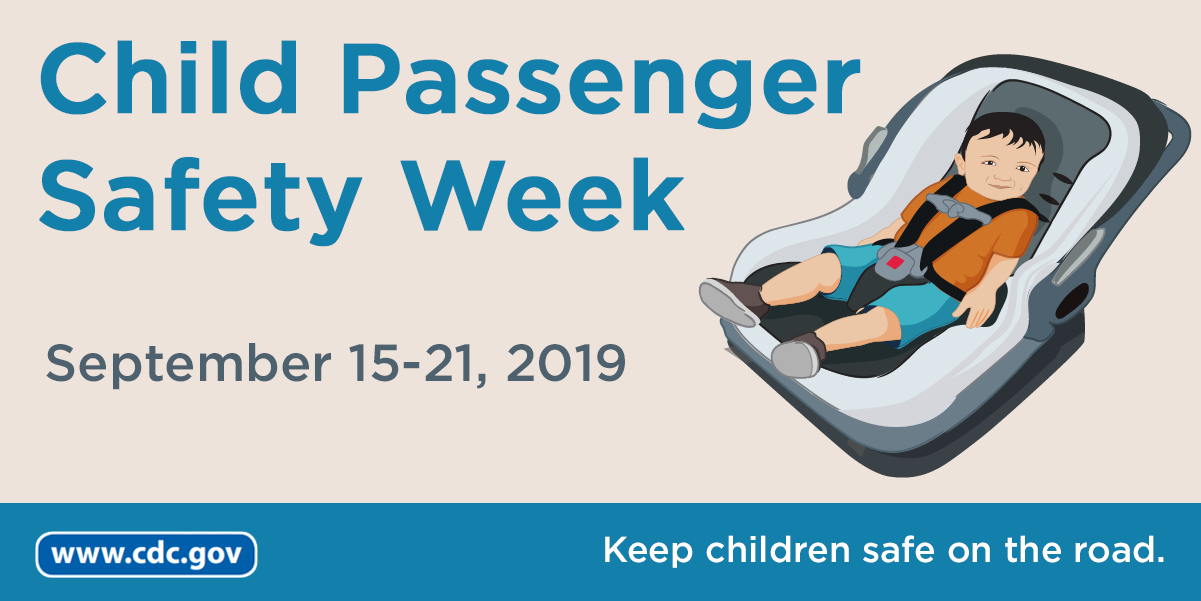Child Passenger Safety | Motor Vehicle Safety | CDC Injury Center
 It's Child Passenger Safety Week!
It's Child Passenger Safety Week!
Child Passenger Safety Week starts today! Celebrate with us and help raise awareness about buckling children in age- and size- appropriate car seats, booster seats, or seat belts. This is a great week to learn how to:
- buckle kids correctly,
- identify and understand the car seat stages, and
- avoid the common mistakes when using car seats, booster seats, and seat belts.

- Rear-facing car seat: Birth until age 2–4.
For the best possible protection, infants and toddlers should be properly buckled in a rear-facing car seat, in the back seat, until they reach the upper weight or height limits of their seat. Check the seat owner's manual and/or labels on the seat for weight and height limits.- Forward-facing car seat: After outgrowing rear-facing seat and until at least age 5.
When children outgrow their rear-facing seats, they should be properly buckled in a forward-facing car seat, in the back seat, until they reach the upper weight or height limit of their seat. Check the seat owner's manual and/or labels on the seat for weight and height limits. - Booster seat: After outgrowing forward-facing seat and until seat belts fit properly.
Once children outgrow their forward-facing seat, they should be properly buckled in a belt positioning booster seat, in the back seat, until seat belts fit properly. Seat belts fit properly when the lap belt lays across the upper thighs (not the stomach) and the shoulder belt lays across the chest (not the neck). Proper seat belt fit usually occurs when children are about 4 feet 9 inches tall and aged 9–12.- Seat Belt: Once seat belts fit properly without a booster seat.
Children no longer need to use a booster seat once seat belts fit properly. Seats belts fit properly when the lap belt lays across the upper thighs (not the stomach) and the shoulder belt lays across the chest (not the neck). Proper seat belt fit usually occurs when children are about 4 feet 9 inches tall and aged 9–12.Remember, always properly buckle children age 12 years and younger in the back seat!























.png)











No hay comentarios:
Publicar un comentario